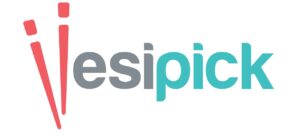Here are five best practices for creating a requirements gap analysis document:
Clearly Define Scope and Objectives:
Set the Stage: Start by introducing the project, its goals, and the purpose of the gap analysis.
Identify Stakeholders: List all relevant stakeholders involved, including customers, product managers, developers, and testers.
Define Requirements Sources: Specify the sources of your requirement information. This could include customer interviews, user stories, product specifications, or competitor analysis.
Organize Your Requirements:
Categorize Requirements: Group requirements into logical categories based on functionality, user type, or system component. This improves clarity and simplifies comparison.
Create a Requirements Matrix: Develop a table with columns for each requirement source and rows for each specific requirement. This allows for a clear side-by-side comparison.
Analyze the Gap:
Compare & Contrast: For each requirement, compare the information from each source in the matrix. Identify any discrepancies, missing elements, or areas where requirements are unclear.
Assess Impact: Evaluate the potential impact of each gap on the project. Is it a minor inconvenience or a major roadblock? Prioritize the gaps based on their severity.
Develop Actionable Recommendations:
Bridge the Gap: For each identified gap, propose solutions or recommendations on how to address it. This might involve gathering additional requirements, revising existing ones, or clarifying ambiguities.
Assign Ownership: Assign clear ownership for each recommendation. Who will be responsible for gathering missing information or resolving conflicting requirements?
Maintain and Update the Document:
Document Revisions: As the project progresses and requirements evolve, update the document to reflect changes and resolved gaps. Maintain a version history for reference.
Accessibility and Communication: Distribute the gap analysis document to all relevant stakeholders. Ensure everyone involved is aware of identified gaps and proposed solutions.
Additional Tips:
Use Clear and Concise Language: Avoid technical jargon when explaining requirements or gaps. Aim for clear communication understandable by all stakeholders.
Visual Aids: Consider incorporating visuals like flow charts or diagrams to represent complex requirements or relationships between them.
Collaboration is Key: Encourage open communication and collaboration throughout the gap analysis process. Stakeholders from different areas can provide valuable insights and perspectives.
By following these best practices, you can create a requirements gap analysis document that fosters understanding, identifies potential issues early on, and paves the way for a successful project with well-defined and achievable goals.



